Workshop on polarised light
Saturday 24th June 2023
The workshop was organised by Paul Smith, who got things started by showing us some slides on one of the Club’s Zeiss Standard microscopes fitted with a polariser and an analyser, shown on screen and via Zoom using an eyepiece camera in the vertical tube of the trinocular head.
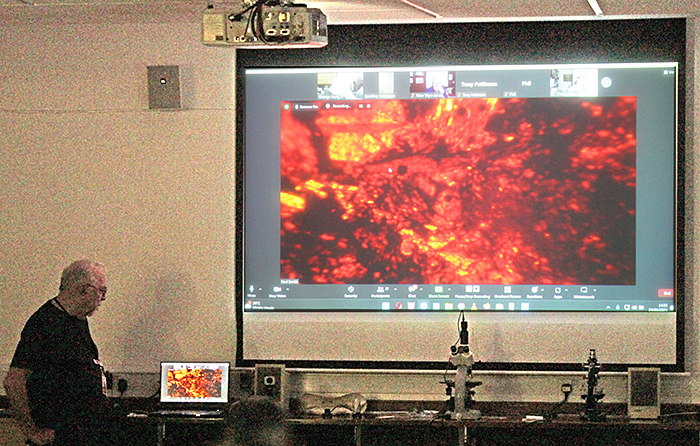 Paul Smith
Paul Smith
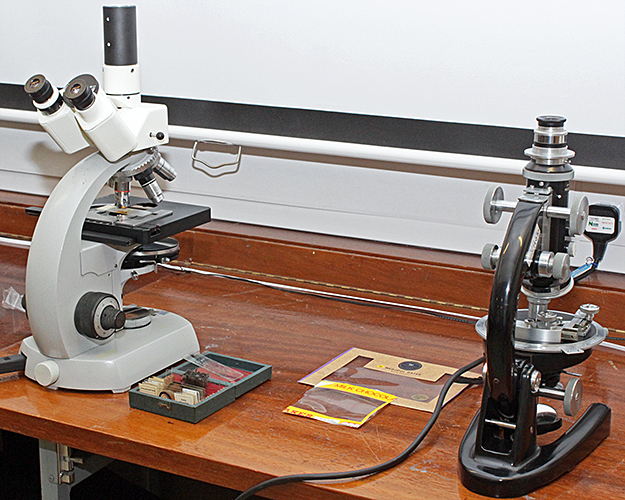 Zeiss Standard and J. Swift microscopes
Zeiss Standard and J. Swift microscopes
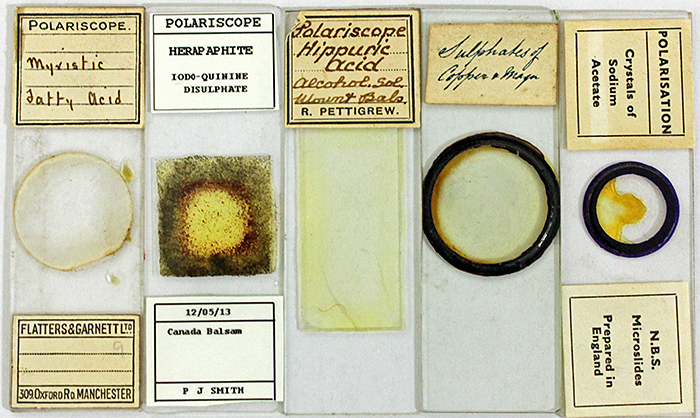 Paul Smith’s slides
Paul Smith’s slides
Many plastic films can be used as retarders to change the colours that appear under crossed polarisers. Their effect depends on their chemistry, the method of manufacture, their thickness and their orientation. Paul brought along a couple of examples to see what effect they had.
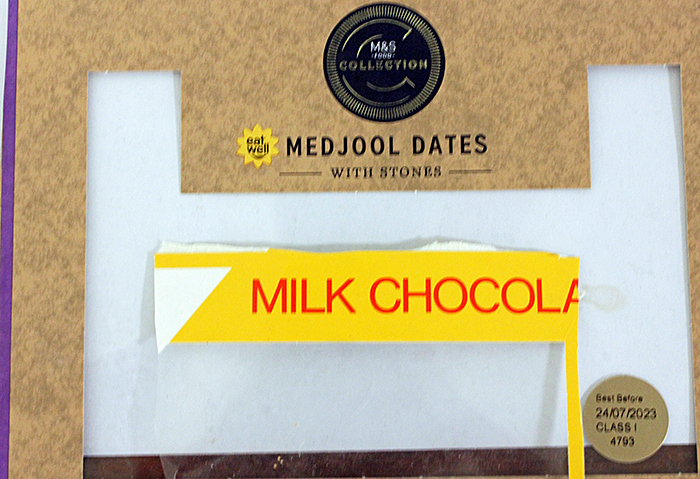 Plastic films to try as retarders
Plastic films to try as retarders
The workshop was broadcast live on Zoom, and after Paul’s introduction Quekett members attending via Zoom were invited to contribute.
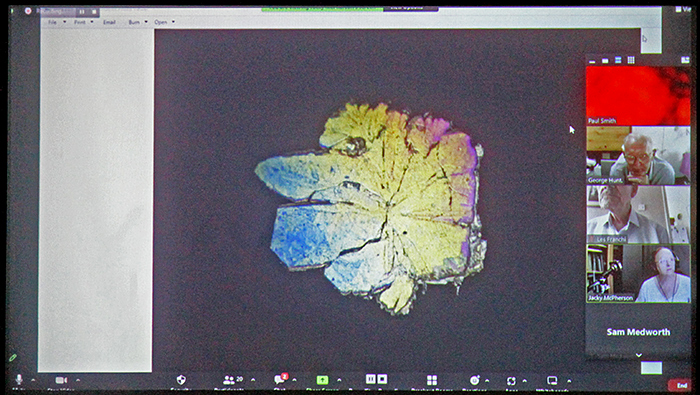 Jacky McPherson via Zoom
Jacky McPherson via Zoom
After the main contributions via Zoom, the people who attended in person were able to examine the exhibits, while the Zoom participants continued with their own gossip meeting.
Mark Berry brought his Kyowa binocular polarising microscope and some interesting slides.
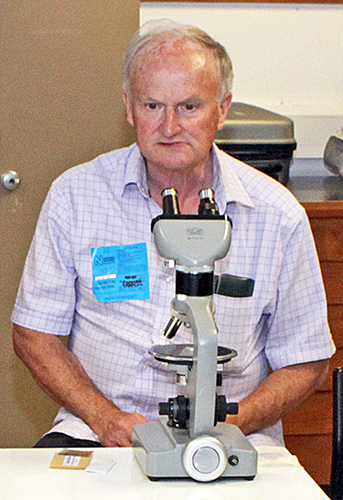 Mark Berry
Mark Berry
Pam Hamer showed the ‘magic’ ducks and flags that she shows to children, and explained how to identify minerals in thin sections using polarised light.
- Read Pam’s notes: Polarisation – Workshop 24th June 2023
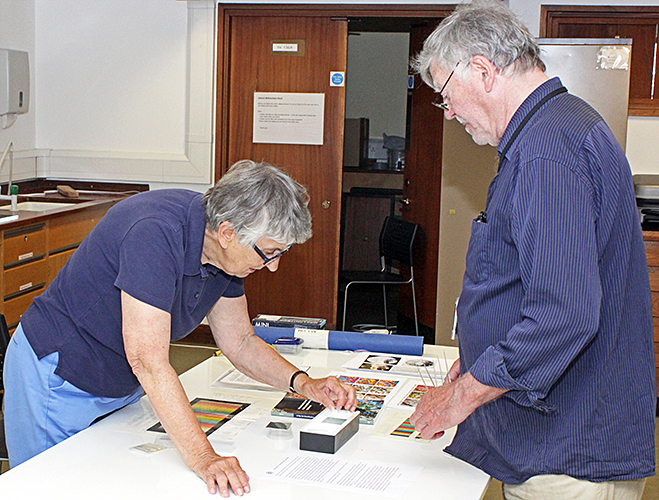 Pam Hamer and Danny Ferri
Pam Hamer and Danny Ferri
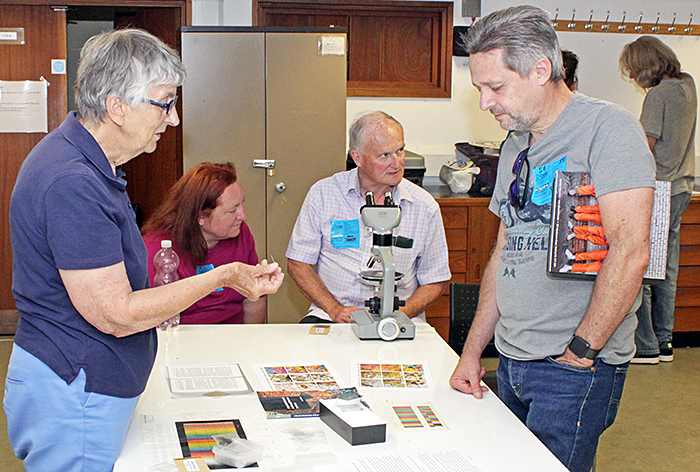 Pam Hamer and Bevil Templeton-Smith
Pam Hamer and Bevil Templeton-Smith
Pam makes ducks and flags from multiple layers of Sellotape for showing to children. Under normal light, they are difficult to see, but under crossed polarisers and with wave plates (retarders) they show a range of colours. Sellotape is stretched when manufactured so is birefringent; one layer of tape gives a pale yellow colour, two gives blue and three goes into the reddish shades. Pam provided a small light box and some ¼ wave plates so that we could experiment.
 Sellotape ducks
Sellotape ducks
On a much more technical note, Pam showed a book by Andrew Barker, A Key for Identification of Rock-forming Minerals in Thin-Section. This uses several features of the minerals, including the colours that they produce under crossed polarisers and with wave plates under controlled conditions.
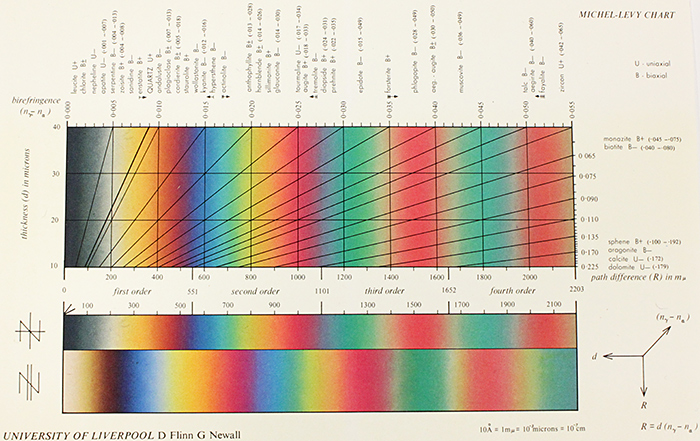 Michel-Levy chart
Michel-Levy chart
Pam showed photomicrographs of sections of hornblende porphyrite on slides from the Club’s Caffyn collection, taken without polarisers, with crossed polarisers, and with the addition of a wave plate.
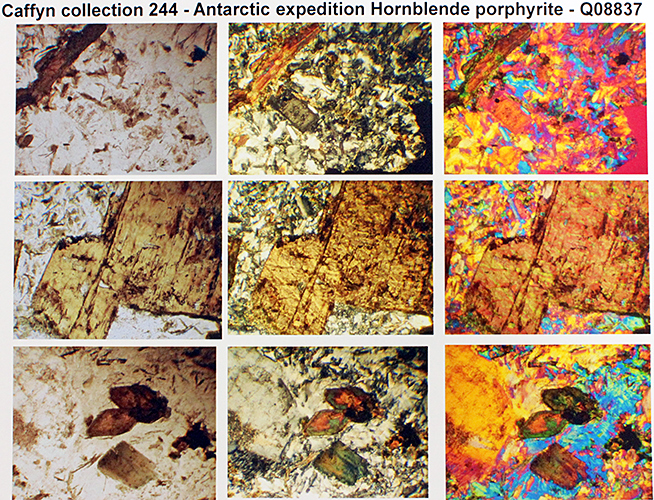 Horneblende porphyrite
Horneblende porphyrite
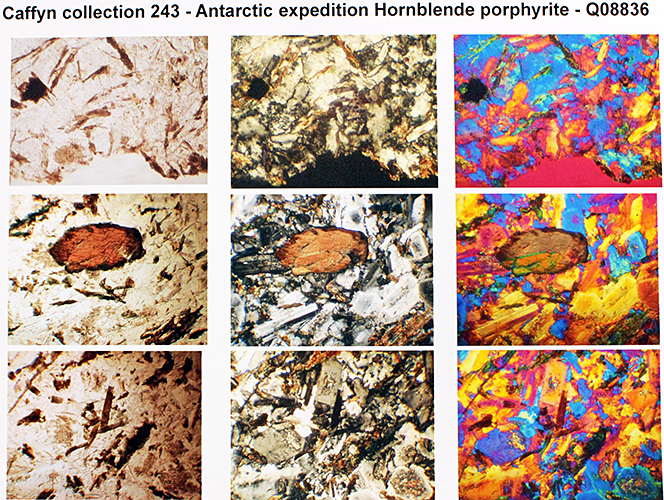 Horneblende porphyrite
Horneblende porphyrite
Paul Smith brought some pairs of 3D spectacles that he had modified to make both lenses the same. He used a thin A4 LED light box with a sheet of polarising film so that we could see colours in various types of plastic film when using the polarising spectacles. He also brought some explanatory notes from Knight Optical, who supply some interesting items but are not cheap.
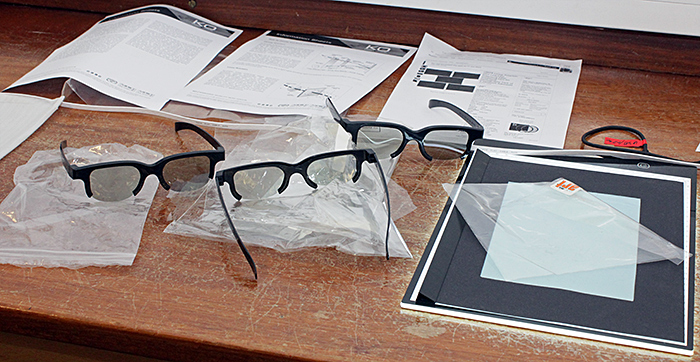 Paul Smith’s exhibit
Paul Smith’s exhibit
Bevil Templeton-Smith is a new member and has only been interested in microscopy for about three years. He uses Leitz Orthoplans and a Sony α7R IV camera and takes excellent photos of crystals under polarised light. He showed us several of them on his iPad, and you can see more of them on Instagram. Bevil mentioned that he will shortly be giving a talk at Westminster Academy, so Joan promptly enlisted him to give a talk to Quekett members at the Home Counties Meeting in Cobham on Saturday 24th March 2024.
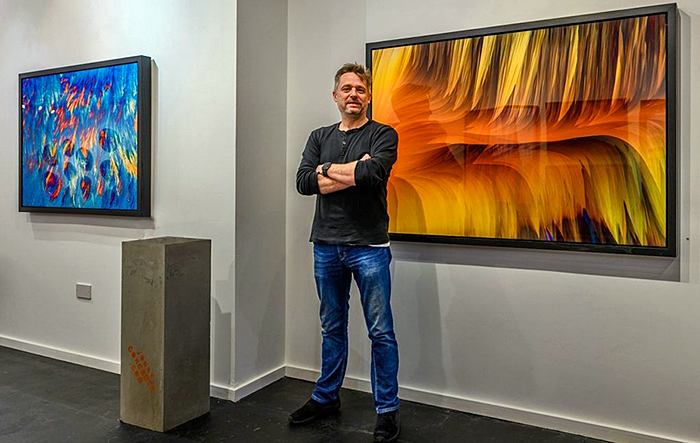 Bevil Templeton-Smith with his exhibition prints of crystals (dye-sublimation ChromaLuxe prints on metal)
Bevil Templeton-Smith with his exhibition prints of crystals (dye-sublimation ChromaLuxe prints on metal)
Chris Thomas used one of the Club’s Lomo Biolam Р13 polarising microscopes to show a slide of a head louse. Not many colours appear just using crossed polarisers, but adding a retarder (the square film on the base) produces colours in the muscles.
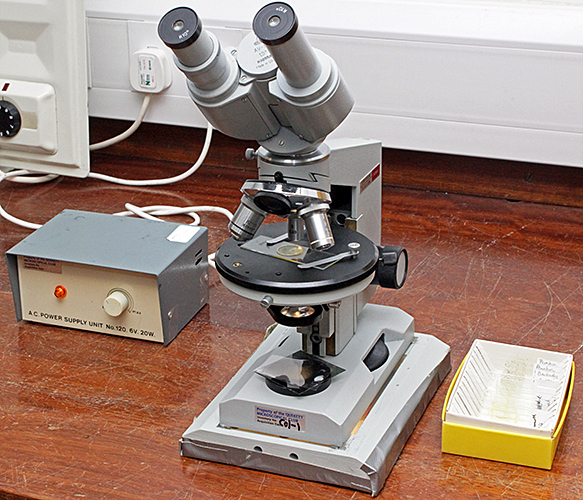 Chris Thomas’s exhibit
Chris Thomas’s exhibit
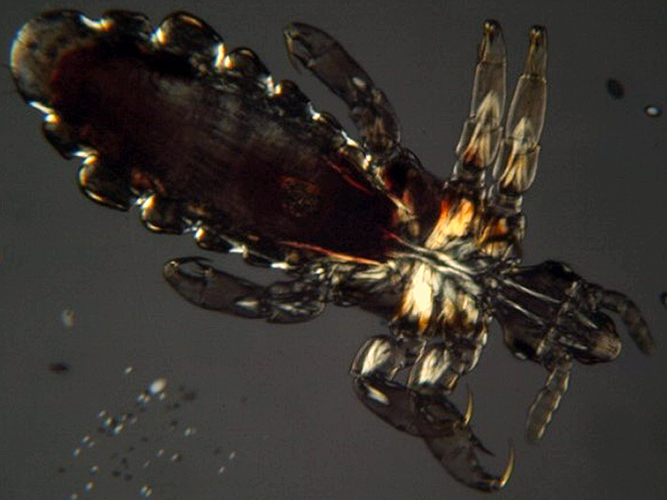 Head louse under crossed polarisers [by Chris Thomas]
Head louse under crossed polarisers [by Chris Thomas]
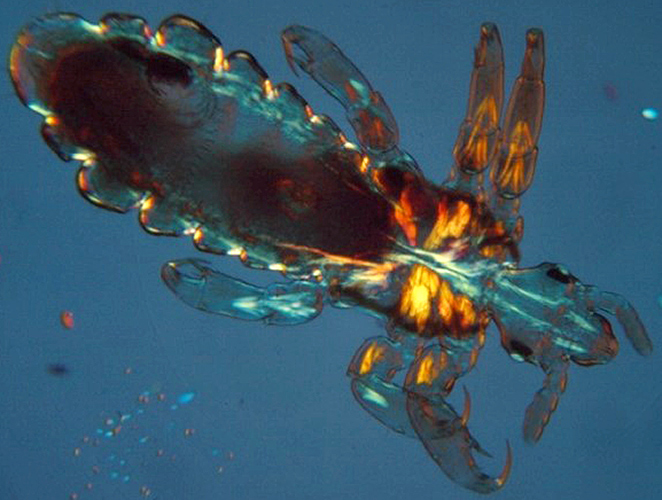 Head louse under crossed polarisers and a retarder [by Chris Thomas]
Head louse under crossed polarisers and a retarder [by Chris Thomas]
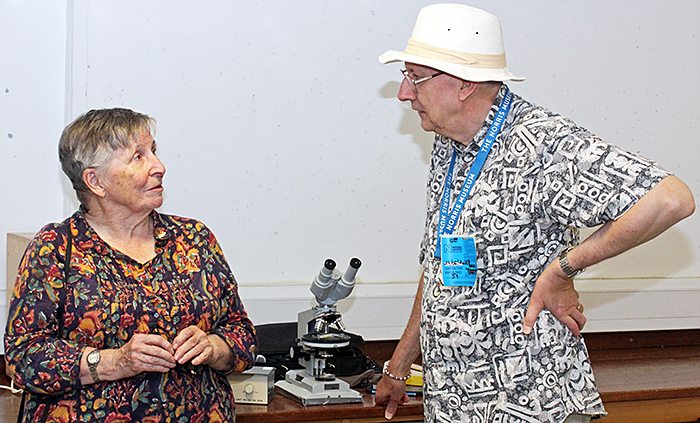 Joan Bingley and Chris Thomas
Joan Bingley and Chris Thomas
Alan Wood brought some polarisers, analysers and retarders. He started with a linear polarising filter for a camera, and a disc of polarising film bought on eBay as the analyser. He eventually found the proper Olympus items on eBay, and found that they provided only a small change in the quality of images. He made his first retarders from various plastic films held in plastic 35 mm slide mounts. The aperture was only just big enough to avoid vignetting, so he changed to annular cardboard mounts that he cuts from cornflake boxes using a compass cutter.
- Read Alan’s notes: Upgrading polarisers and analysers
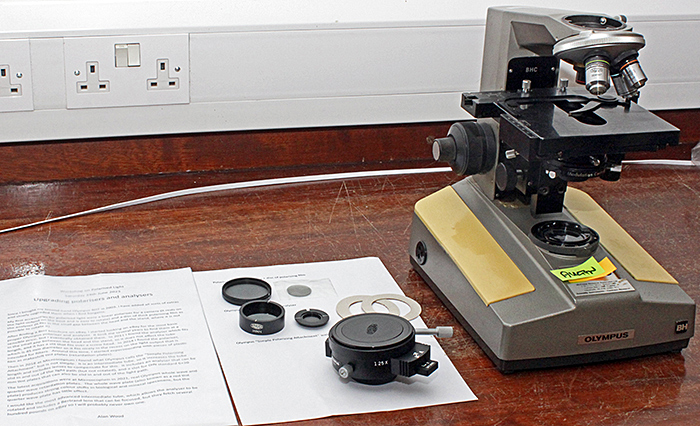 Alan Wood’s exhibit
Alan Wood’s exhibit
Click the arrows to move through the slides. Click the symbol at bottom right for a larger version.
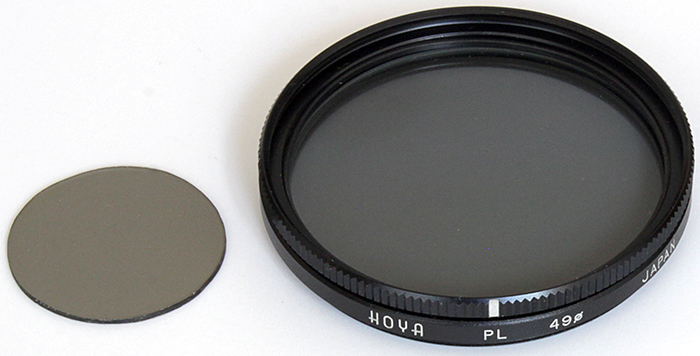 Makeshift analyser (left) and polariser
Makeshift analyser (left) and polariser
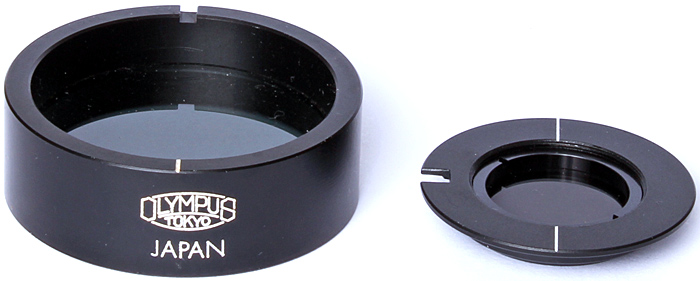 Olympus A-POL polariser (left) and B-AN analyser
Olympus A-POL polariser (left) and B-AN analyser
 Makeshift retarders
Makeshift retarders
Alan uses a compass cutter to make his cardboard annular mounts for holding plastic film retarder. The clear central area is large enough to cover the light outlet on the base of the microscope, and the annulus is about 10 mm wide to make the mount easy to handle and reasonably stiff.
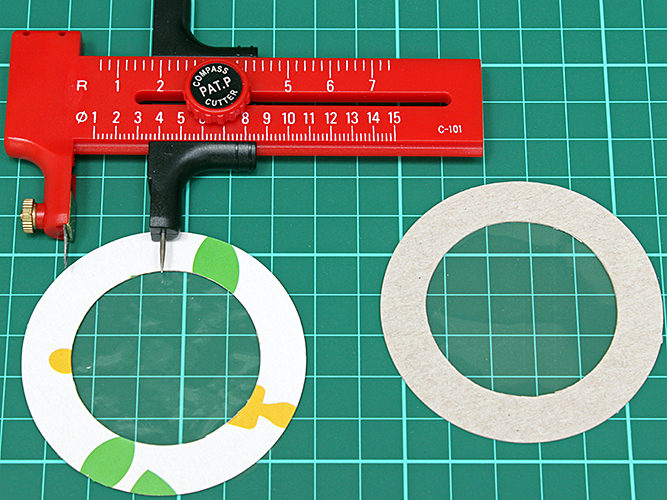 Compass cutter and annular card mounts for retarders
Compass cutter and annular card mounts for retarders
 Thin section of sillimanite (left to right: no polarisers, crossed polarisers, crossed polarisers + retarder)
Thin section of sillimanite (left to right: no polarisers, crossed polarisers, crossed polarisers + retarder)
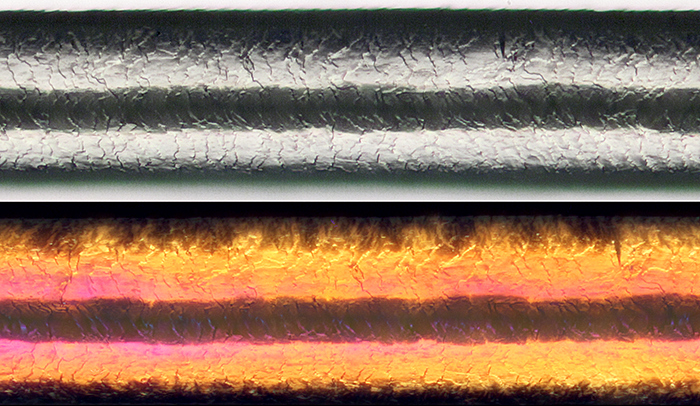 Human black hair (top: no polarisers, bottom: crossed polarisers)
Human black hair (top: no polarisers, bottom: crossed polarisers)
Report and most photographs by Alan Wood

